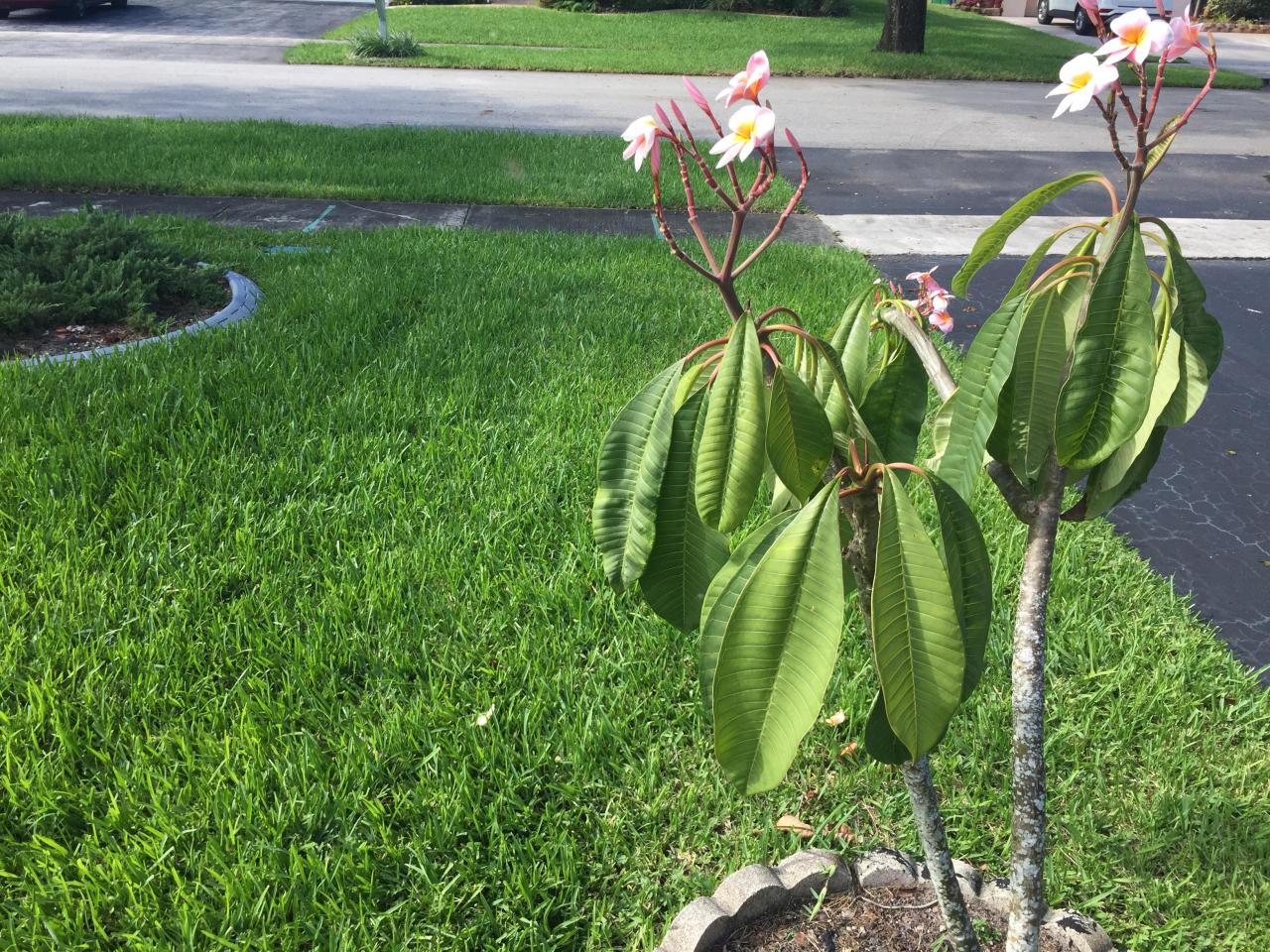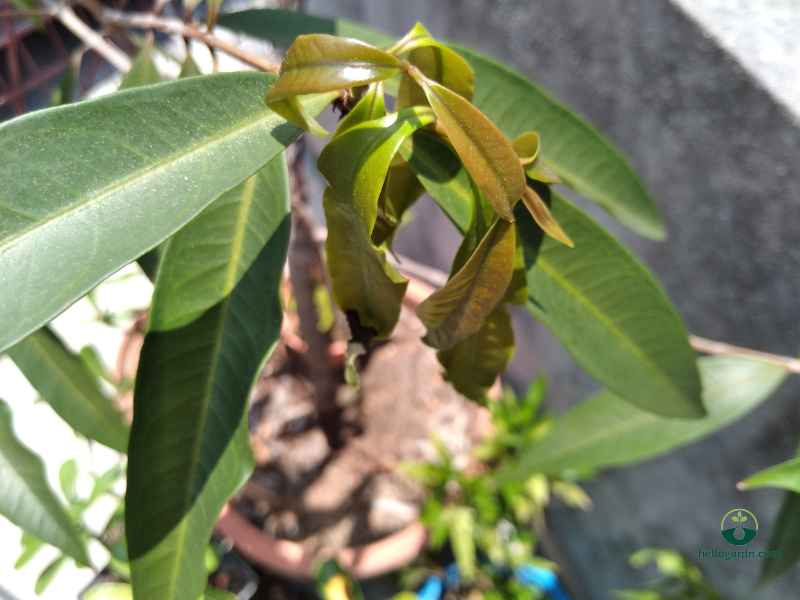Plumeria, known for its beautiful flowers and pleasant fragrance, is a popular choice among garden enthusiasts and houseplant lovers alike. However, the sight of plumeria leaves drooping can be concerning for plant owners. This issue can be indicative of various underlying problems that require immediate attention. In this article, we’ll delve into the reasons why plumeria leaves droop, explore possible solutions, and provide tips on how to keep your plumeria healthy and vibrant. 🌺
Understanding Plumeria and Its Care Requirements
Plumeria, often referred to as frangipani, is a tropical plant that thrives in warm climates. These plants are not only prized for their stunning blooms but also for their fragrant leaves. Understanding the care requirements of plumeria is essential to maintaining their health and preventing issues such as drooping leaves.
Ideal Growing Conditions
To foster a healthy plumeria, consider the following ideal conditions:
| Condition | Ideal Range |
|---|---|
| Sunlight | Full sun (6-8 hours per day) |
| Temperature | 60°F to 80°F (15°C to 27°C) |
| Humidity | 40% to 60% |
| Soil | Well-draining, sandy soil |
| Watering | Moderate, allowing soil to dry out between watering |
These conditions can vary slightly based on your specific environment, but sticking close to these guidelines will help keep your plumeria healthy.
Common Reasons for Drooping Leaves
There are several factors that can cause plumeria leaves to droop. Recognizing these signs early on is crucial for remedying the situation.
1. Overwatering
One of the most common causes of drooping leaves in plumeria is overwatering. When the roots sit in waterlogged soil, they can rot, leading to reduced nutrient uptake. As a result, the leaves start to droop.
Important Note: Always ensure that your plumeria pot has adequate drainage holes to prevent water accumulation.
2. Underwatering
Conversely, underwatering can also lead to drooping leaves. Plumerias require a moderate amount of water. If the soil becomes too dry, the plant will stress and the leaves will droop as a protective response.
3. Temperature Stress
Plumeria thrives in warm temperatures. Exposure to cold drafts or sudden temperature drops can cause the plant to go into shock, resulting in drooping leaves. Protect your plumeria from drastic temperature fluctuations.
4. Nutrient Deficiency
Lack of essential nutrients can also lead to drooping leaves. If your plumeria is not receiving adequate nutrients, especially potassium and nitrogen, it may show signs of distress.
5. Pests and Diseases
Pests such as aphids or spider mites, as well as diseases like root rot or fungal infections, can negatively impact the health of your plumeria. These issues can lead to drooping leaves as the plant struggles to survive.
How to Diagnose the Problem: Plumeria Leaves Drooping

Diagnosing the cause of drooping leaves involves examining various aspects of your plumeria’s environment and condition. Here’s how you can systematically approach the issue:
1. Check Soil Moisture
Using your finger or a moisture meter, check the soil moisture. If the soil is soggy, reduce your watering schedule. If it’s dry, consider increasing your watering frequency.
2. Assess Light Exposure, Plumeria Leaves Drooping
Ensure your plumeria is receiving enough sunlight. If it’s indoors, consider moving it to a location where it can receive full sunlight for most of the day.
3. Inspect for Pests
Look closely at the leaves and stems for any signs of pests. If you find any, treat the plant with insecticidal soap or neem oil.
4. Monitor Temperature
Check the surrounding temperature. If it drops below the ideal range, consider relocating your plumeria to a more suitable environment.
Solutions for Drooping Leaves
Once you’ve diagnosed the issue, you can take the necessary steps to rectify it. Here are some effective solutions:
1. Adjust Your Watering Schedule
If overwatering is the culprit, allow the soil to dry out completely before the next watering. If underwatering is the issue, ensure that you are giving your plant enough moisture while still allowing for drainage.
2. Optimize Light Exposure
If your plumeria isn’t getting enough sunlight, consider relocating it to a sunnier spot. If it’s getting too much sun, use a sheer curtain to diffuse the light.
3. Fertilize Wisely
Use a balanced fertilizer during the growing season (spring and summer) to provide your plumeria with the essential nutrients it needs. Look for fertilizers high in potassium to promote flowering.
4. Treat Pests and Diseases
If you’ve found pests or signs of disease, treat your plant immediately. Regularly inspect your plumeria to catch any issues early.
Important Note: Always follow the instructions on pesticides and fertilizers to avoid harming your plant.
5. Provide Temperature Stability
Make sure your plumeria is not exposed to cold drafts or extreme heat. Maintaining a stable temperature will help prevent stress on the plant.
Preventive Measures to Maintain Healthy Plumeria
Preventing plumeria leaves from drooping is easier than treating the problem once it arises. Here are some preventive measures to consider:
1. Regular Watering Schedule
Establish a consistent watering schedule based on the season and environmental conditions. During hot weather, you may need to water more frequently, while in cooler months, reduce watering.
2. Appropriate Fertilization
Feed your plumeria during its active growing season with a well-balanced fertilizer to ensure it receives the nutrients it needs for healthy growth.
3. Monitor for Pests
Regularly inspect your plant for any signs of pests. Early detection can prevent a more serious infestation that can harm your plumeria.
4. Rotate Your Plant
Rotating your plumeria pot every few weeks will allow all sides of the plant to receive adequate sunlight and promote even growth.
5. Choose the Right Potting Mix

Using a well-draining potting mix is crucial for plumeria. Consider a mix that includes sand, perlite, or orchid bark to ensure good drainage.
🌼 By taking these preventive measures, you can enjoy a flourishing plumeria plant with vibrant leaves and abundant blooms.
When to Seek Professional Help
While many issues with plumeria can be resolved at home, there may be situations where professional help is warranted:
1. Persistent Issues
If your plumeria continues to droop despite your best efforts, it may be time to consult with a professional horticulturist or plant specialist for tailored advice.
2. Severe Pest Infestation
If you are faced with a severe pest infestation that you cannot manage on your own, seeking professional pest control may be necessary to save your plant.
3. Advanced Disease Symptoms
For signs of severe disease that might affect the overall health of your plumeria, consult a professional for diagnosis and treatment options.
By addressing issues quickly and effectively, you can help your plumeria thrive and avoid the dreaded drooping leaves that can mar its beauty. Remember, healthy leaves lead to beautiful blooms, and with the right care, your plumeria can be a stunning addition to your garden or home. 🌿
